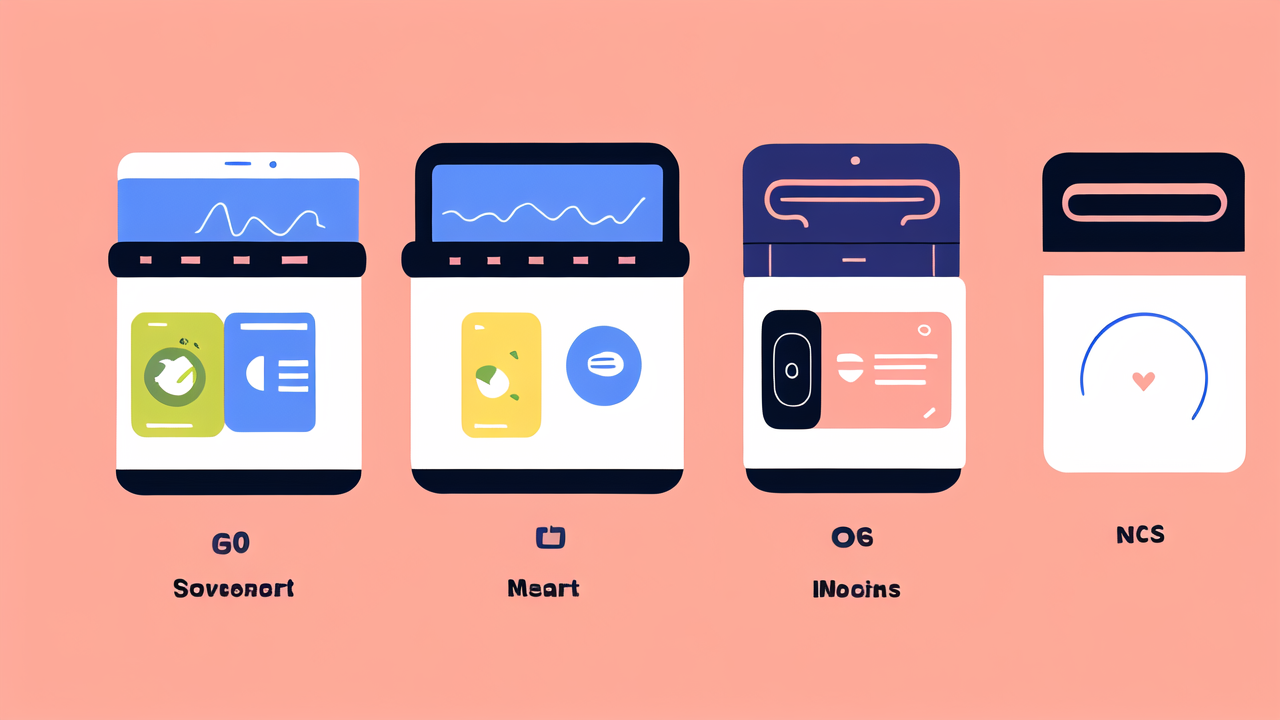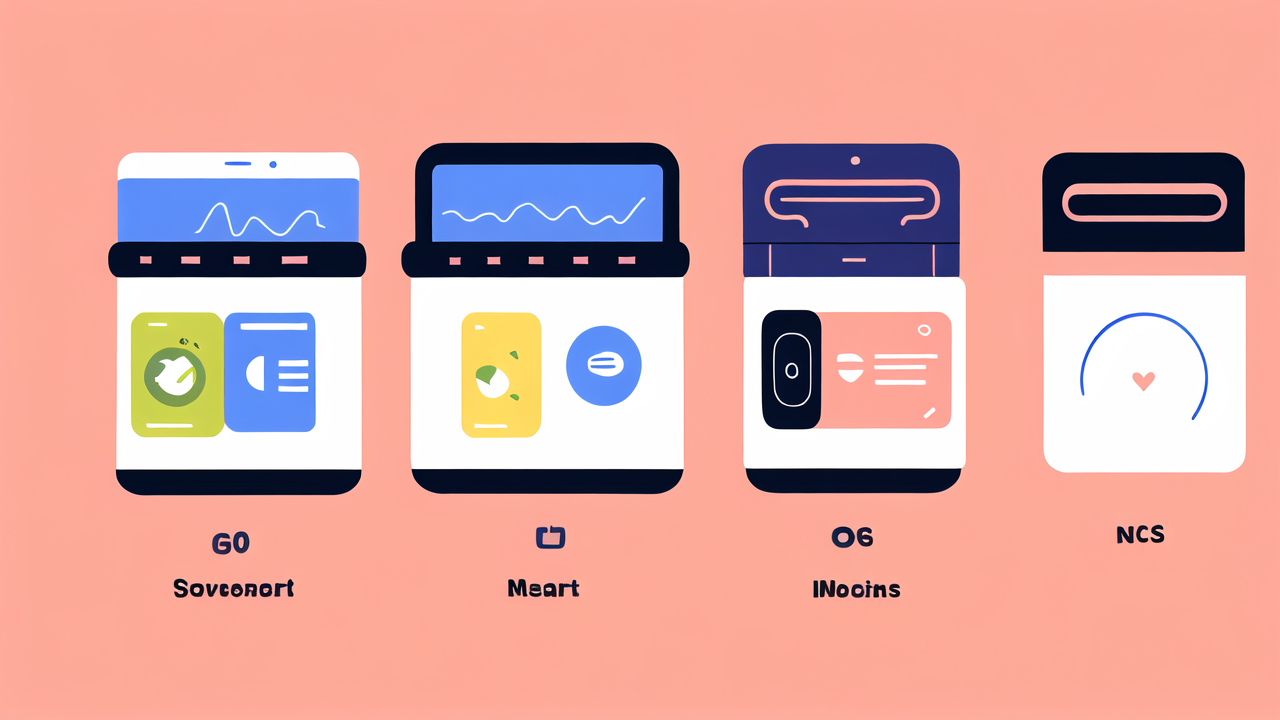Understanding Wearable Technology
Brief History of Wearables
Wearable technology dates back to the 17th century with the invention of the abacus ring, used for calculations. However, the term 'wearable' took on new meaning in the 1960s with the creation of the first wearable computer, designed to predict roulette wheels. The 1980s saw the introduction of calculator watches, paving the way for more sophisticated devices. The real quantum leap happened in the 21st century with the advent of smartwatches, transforming wearables from simple gadgets to smart devices integrated with daily life. They have since evolved rapidly, becoming sleeker, more powerful, and feature-rich, marking the beginning of a new era in wearable technology.

The Rise of Smart Watches
Smart watches have surged in popularity in recent years. Often seen as a natural progression from traditional wristwatches, smart watches began to gain significant market traction with the advent of advanced features surpassing mere timekeeping. These wearable devices cater to a tech-savvy generation eager to embrace the convenience of having notifications, fitness tracking, and more, all on their wrist. From 2020 to 2021, there was a notable 9 percent increase in ownership, signaling a shift in consumer electronics towards more intimate, personal technology. This rise is propelled not just by the utility they offer but also by their status as a fashionable accessory that complements the digital lifestyle of modern users. With continuous enhancements and the integration of new technologies, smart watches are set to redefine our interaction with personal tech, making life more connected and monitored than ever before.
Core Features of Smart Watches
Fitness Tracking Capabilities
Smart watches have transformed the way we approach fitness and wellness. They come equipped with a multitude of sensors and software dedicated to monitoring physical activity. Users can track their steps, distance traveled, calories burned, and more. Many models feature heart rate monitors and can even measure specific workouts like cycling or swimming. This real-time tracking motivates users to achieve daily exercise goals and maintain a healthy lifestyle. The synchronization with fitness apps also provides valuable insights and progress reports. This integration allows for a comprehensive view of one’s fitness journey, making smart watches an essential tool for health enthusiasts.
Integration with Smartphones
Smart watches have revolutionized our daily lives with their capability to integrate with smartphones. This feature has become a cornerstone of wearable technology. When paired with a smartphone, smart watches offer a seamless extension of your device's features. They allow you to receive notifications for calls, texts, and apps straight to your wrist, ensuring you're always connected without needing to pull out your phone. Moreover, smart watches enable users to control music, check calendar events, and even send quick replies to messages using voice commands or preset texts. Compatibility with various smartphone operating systems has been a major focus for smart watch manufacturers, making sure that whether you're an iPhone devotee or an Android enthusiast, your smart watch works in harmony with your phone. This interconnectivity not only enhances convenience but also plays a significant role in the smart watch's appeal to a broad user base.
Standalone Connectivity Options
One of the advancements that set modern smart watches apart is their standalone connectivity options. Gone are the days when a smart watch could only function when tethered to a smartphone. Nowadays, many smart watches come with built-in Wi-Fi, cellular connectivity, and even GPS. This independence allows users to make calls, send texts, stream music, and access the internet directly from their wrist, without needing a phone nearby. This feature particularly benefits those who want to stay connected during activities where carrying a phone is inconvenient, like running or swimming. With cellular models, users can also maintain communication in case of emergencies, even if their phone is out of reach. As the technology continues to develop, we can expect even more sophisticated connectivity features in the future of wearable devices.
Market Trends and Ownership Statistics
Growth in Smart Watch Ownership
Smart watches are not just a fleeting tech trend; they're fast becoming a staple of the modern lifestyle. In recent years, we've witnessed a continuous surge in smart watch ownership. Reports indicate a significant jump of over 9% in just a year, highlighting the growing allure of these wearable devices. This trend is driven by the multi-functional capabilities of smart watches, including fitness tracking, smartphone integration, and even standalone connectivity, making them invaluable for users looking to manage their lives with more ease and efficiency. As this technology becomes more accessible and varied in design, we can only expect these numbers to climb higher in the forthcoming years, changing the face of personal technology use.
Demographic Insights
Recent data reveals interesting demographic insights into smart watch ownership. Trends indicate that younger consumers, particularly those between the ages of 18 to 34, are the most likely to own a smart watch. Adoption rates among this age group are significantly higher than older demographics. This reflects a tech-savvy generation that values connectivity and fitness tracking on the go. However, it's not just the young embracing this technology; older age groups are increasingly recognizing the health monitoring benefits smart watches offer. Gender-wise, studies show a fairly even split in ownership, although certain models may appeal more to one gender based on design and features. This demographic data helps manufacturers tailor their products to meet the specific needs and preferences of different consumer groups, ensuring a wide appeal of their smart watch offerings.
Smart Watch Operating Systems and Platforms
Android vs. iOS: Platform Wars
The battle between Android and iOS platforms extends to the realm of smart watches. Each operating system offers unique features that attract different users. Android smart watches, compatible with Android smartphones, allow for a seamless integration with Google's ecosystem. This includes services like Google Assistant, Google Maps, and more. They are known for their customization options, allowing users to tailor their devices to their specific needs and preferences.
On the other side, iOS smart watches, primarily the Apple Watch, work exclusively with iPhones. This integration ensures a smooth user experience, with features such as iMessage, Apple Pay, and HealthKit. iOS smart watches typically focus on premium design and a more controlled app environment.
Choosing between Android and iOS often comes down to personal choice and the type of smartphone the user already owns. While Android offers versatility, iOS boasts a more integrated ecosystem. Yet, the rivalry drives innovation and improvements, benefitting all users in the rapidly evolving market of smart watches.
Cross-Compatibility and Third-Party Apps
The smart watch market has seen a significant expansion of cross-compatibility features. Today’s devices often allow users to enjoy third-party apps, breaking the walls between different operating systems. Be it fitness, productivity, or entertainment, these apps expand a smart watch's utility, making them an essential feature for users who seek a cohesive experience across multiple gadgets. For example, popular health and fitness apps can sync data between the smart watch and smartphones regardless of the OS. This increased compatibility encourages developers to create versatile apps that cater to a wider audience, further enhancing the smart watch experience for users. As the market evolves, we expect to see even more seamless integration and an ever-growing library of third-party applications.
Design and Aesthetics of Modern Smart Watches
Fashion Meets Functionality
In the fast-paced world of technology, smart watches have found a unique intersection between style and utility. Once considered bulky and unappealing, today's smart watches blend seamlessly with fashion trends. Brands have stepped up their game, offering slim profiles, a variety of materials like stainless steel or aluminum, and a multitude of band options to cater to personal style. These watches come with interchangeable straps and multiple color choices, so whether you're in the gym or at a business meeting, your smart watch complements your outfit. They include features like always-on displays and customizable watch faces, which mean you no longer have to sacrifice aesthetic appeal for functionality. The modern smart watch proves that tech can be both a powerful tool and a fashion statement.
Customization and Personalization Options
Modern smart watches cater to users who value individuality and style, offering extensive customization options. From interchangeable straps in various colors and materials to customizable watch faces with personalized data displays, the choices are endless. Users can select from leather, silicone, or metal bands to suit their fashion sense or comfort. Watch faces can be tweaked to show fitness stats, the weather, or even personal photos, making each device truly unique. Brands often collaborate with fashion designers to create limited edition collections, adding a touch of luxury and exclusivity. The blend of technology and personal taste makes modern smart watches not just a gadget, but a fashion statement as well.
Battery Life and Charging Solutions
Innovations in Power Efficiency
As smart watches have evolved, manufacturers have made significant innovations in power efficiency. These innovations focus on maximizing battery life, allowing users to enjoy a longer time between charges. Modern smart watches now employ low-power display technology, advanced power-saving modes, and energy-efficient processors. These improvements ensure that even with extensive use of features like fitness tracking and notifications, the watches can last through the day. Software optimizations also play a vital role by effectively managing background activity and adjusting power usage in real-time. Consequently, users experience both high performance and enduring battery life, making smart watches more practical and user-friendly for everyday wear.
Wireless Charging and Power Banks
The evolution of smart watches has brought convenience and style to our wrists, improving not just how we interact with technology but also how we power our devices. Wireless charging, a standout feature, allows users to charge their smart watches without the hassle of cables. By placing the watch on a charging pad or dock, the battery begins to recharge through an electromagnetic field. This method simplifies the charging process and reduces wear and tear on charging ports.
In addition to wireless charging, power banks are also becoming increasingly important for smart watch users on the go. Portable power banks offer the flexibility to charge smart watches—and other devices—anytime and anywhere. They're especially useful during long trips, outdoor adventures, or busy days when access to a power outlet may be limited. Manufacturers have responded to consumers' needs by designing compact, lightweight power banks that are easy to carry, ensuring that your smart watch stays powered up throughout the day. Together, wireless charging and power banks ensure that smart watch users never miss a notification or a step count due to a dead battery.
Health Monitoring Innovations
Heart Rate and Sleep Tracking
Smart watches have advanced significantly in the realm of health monitoring. One of the most sought-after features is the ability to track heart rate. These devices use sensors to monitor your pulse continuously, providing insights into your cardiovascular health. The data can help you adjust your workouts for optimum performance and track resting heart rates for overall well-being. Additionally, sleep tracking is a notable innovation. Smart watches can analyze sleep patterns, including the duration and quality of sleep. They can detect the amount of time spent in different sleep stages, like deep or REM sleep, and offer suggestions for improving sleep hygiene. These features aim to empower users with personal health data for a better lifestyle.
Emergency Response Features
Smart watches have made significant strides in safeguarding users with emergency response features. These watches are engineered to detect falls, abrupt changes in user activity or heart rate, and can automatically contact emergency services if necessary. Some models also send location data and vital health information to first responders, thus ensuring timely and effective assistance. Manufacturers continue to refine and enhance these features to provide users with robust safety mechanisms that operate seamlessly within the design of the device. These advancements represent a profound commitment to integrating life-saving technology into everyday wearables.
Smart Watch Industry Leaders
Key Players in the Market
In the rapidly progressing domain of smart watches, several major brands stand out as trendsetters. Apple is known for its popular Apple Watch, dominating the market with its seamless integration with iOS devices and continuous technological advances. Samsung competes closely with its Galaxy Watch series, offering extensive features and compatibility with both Android and iOS systems. Fitbit, with its fitness-focused approach, maintains a significant market share, providing users with robust health tracking features. Garmin is another notable name, especially among athletes and outdoor enthusiasts, for its durable devices and precision GPS tracking. These industry leaders are constantly innovating, shaping user experience and pushing the boundaries of what smart watches can do.
Breakthroughs by Leading Brands
The smart watch industry has been marked by significant breakthroughs from leading brands that have not only shaped user experience but have also steered the market trends. Apple is noted for its advancements in health monitoring and seamless connectivity across its ecosystem. With the introduction of the ECG feature on the Apple Watch, it cemented its position as a leader in health-focused technology. Meanwhile, Samsung has pushed boundaries with its rotating bezel interface for easier navigation and its partnerships with fashion brands to cater to the style-conscious consumer. Garmin, on the other hand, has carved a niche in rugged durability and precision GPS tracking, appealing to outdoor enthusiasts. Fitbit’s continuous innovation lies in its comprehensive sleep and fitness tracking capabilities, making wellness data accessible to a wider audience. These brands, among others, have not only contributed to the evolving technology in smart watches but also to the customization options and diverse ecosystems, which drive consumer loyalty and expand the industry's reach.
Future of Smart Watches
Predictions for Next-Gen Wearables
The wearable technology landscape is poised for a thrilling future, with next-gen smartwatches at the forefront. Predictions suggest that upcoming models will boast cutting-edge features – think flexible displays and thinner profiles for unmatched comfort. Innovations may also include batteries with much longer life, eliminating the need for daily charges. Experts foresee advancements in biometric sensors, enhancing the accuracy of health monitoring, such as stress and hydration levels. We might witness smartwatches evolve into true smartphone replacements, capable of independent calls, messages, and more, without the need for a nearby phone. Finally, there's a buzz around smartwatches that could potentially adapt to our routines, offering predictive suggestions to streamline our daily lives. With technology moving at breakneck speeds, the next generation of smartwatches promises to blend seamlessly into our personal and professional worlds.
The Integration of AI and Advanced Sensors
The trajectory of smart watches is set to soar with the integration of AI and advanced sensors, revolutionizing the way we interact with technology. Smart watches are increasingly incorporating AI to offer more personalized experiences, learning from users' habits to provide tailored health advice, notifications, and more. Advanced sensors are expanding the horizons of health monitoring, enabling the detection of a broader range of physiological signals. This includes tracking stress levels, monitoring blood oxygen saturation, and even predicting potential health issues before they arise. As these technologies progress, we can expect smart watches to become even more indispensable, acting as a central hub for our digital and physical well-being.




Leave a comment
This site is protected by hCaptcha and the hCaptcha Privacy Policy and Terms of Service apply.